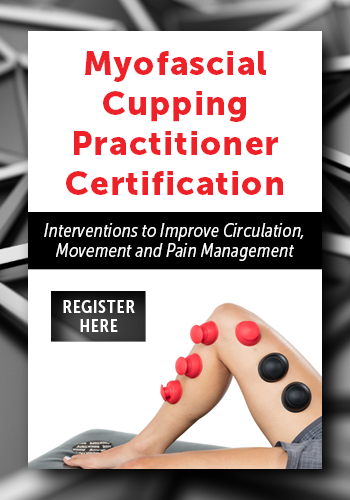Myofascial Cupping Framework
- Review framework of the RockTape Movement Pyramid
- Understand neuroanatomy, skin and fascial systems and how they relate to the course
- Review the current literature related to myofascial cupping techniques.
- Define Time Under Pressure (TUP) as it relates to decompression (curative vs. destructive dosages)
- Review safety of applications
- Cupping indications/contraindications
Skin/fascial/movement screening process
Introduce and practice use of cupping as it relates to direction and pressure that includes these types of treatments:- Tissue decompression:
- External Glide – multiple vectors
- Internal Glide
- Cupping plus Functional Movement
- Treatment Variables:
- Body Positions
- Graded exposure techniques
- Distraction Methods
External Cueing Concept
- Use of cupping for movement disorders (post stroke, different types of dystonias, parkinson's, etc)
- Introduce and practice use of cupping as it relates to movement dysfunction
- Types of Cueing:
- Tactile
- Visual & Tactile
Nerve Entrapments
- Learn, practice and perform specific applications of cupping for nerve entrapments:
- Upper Extremity Entrapments – Median, Radial, Ulnar, others
- Treatment considerations for neural entrapment cupping: external glide, internal glide, meaningful movement
Cupping with Movement
- Learn, practice and perform specific applications of cupping with movement
- External Cueing for Movement Dysfunction
- Isolated Movements — Flexion, Extension, Rotation, Ab/Adduction, Deviation
- Functional Movements — Sagittal, Frontal, Transverse Plane Patterns
- Treatment considerations for cupping with movement, all movement is a screen/treatment opportunity, work and sport-related movement examples
Condition Specific Applications
- Introduction of progression and regression concepts for specific conditions with cupping and taping applications (combo of therapeutic interventions)
- Case studies — Lower Extremity, Trunk, Upper Extremity

